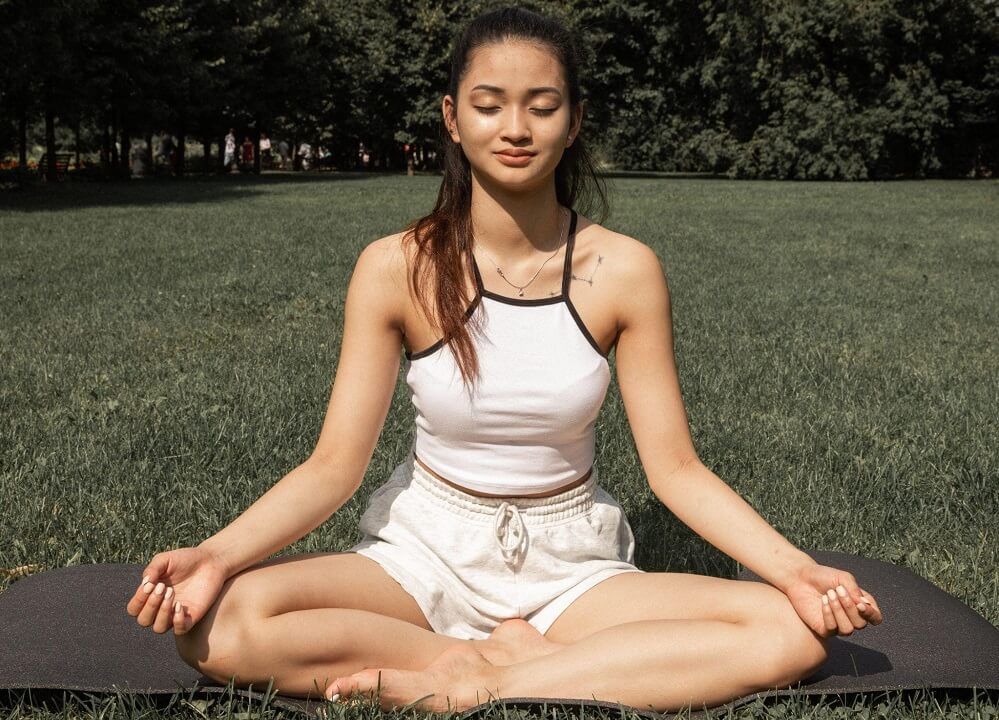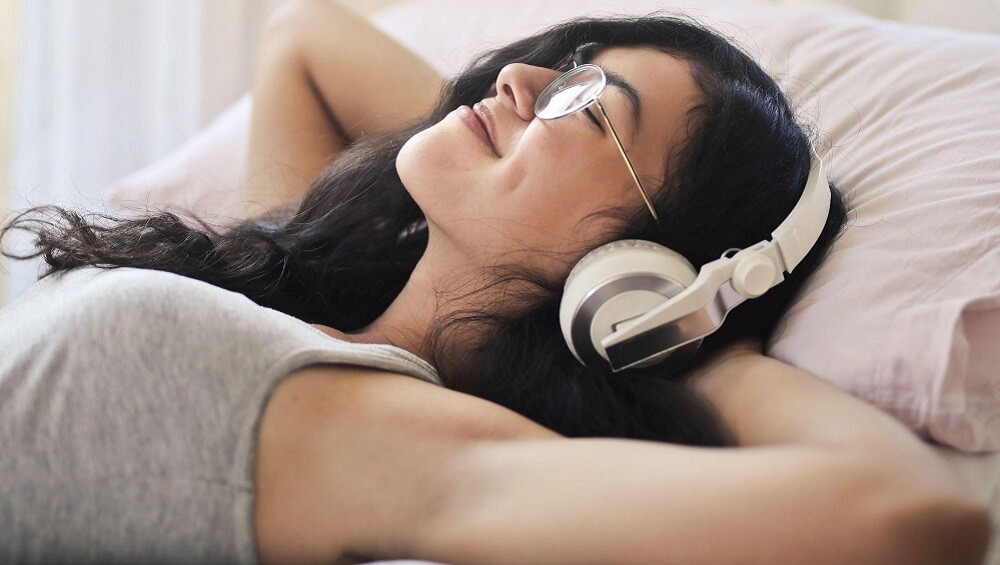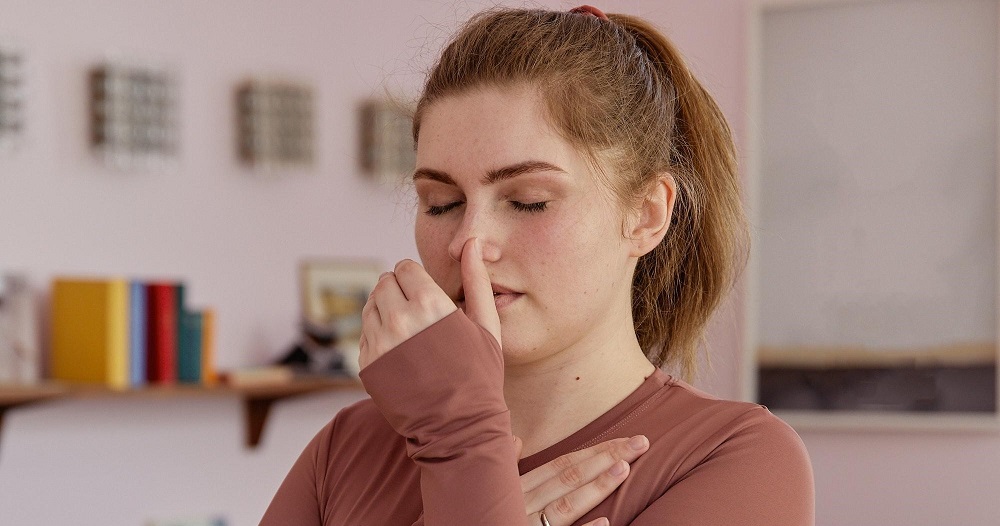Do you struggle to sleep at night or enjoy a good rest without interruption? It’s not easy to unwind after a busy day, especially when you have a lot on your mind and find it difficult to slow down and achieve a calm, peaceful state needed for better sleep. V
arious sleeping disorders, such as obstructive sleep apnea, insomnia, ongoing stress, and anxiety, can impact the quality of rest. You’ll find several breathing and relaxation exercises greatly improve your chances of good sleep.
These include box breathing, 4-7-8 breathing, deep breathing exercises, belly breathing, and other techniques to help you enjoy quality sleep.
Read further to discover how you can incorporate breathing techniques to relieve stress from long work days, financial challenges, emotional exhaustion, and school assignments.
Buteyko Breathing Method
This breath exercise was developed by and named after Dr. Buteyko, who created this method to help you manage breathing for a quality, deep sleep. It’s a valuable technique for people who tend to breathe shallowly, almost to the point of hyperventilating, so that they’re not relaxing enough to ease into sleep. You can practice the Buteyko method using the following steps:
- Sit upright, in a chair, or on your bed, and take in a deep, gentle breath through your nose, taking about thirty seconds.
- Towards the end of the thirty seconds, breathe through your nose with more intention.
- Using your thumb and index finger, close your mouth for a few seconds or as long as possible until you need to take another breath.
- As your mouth remains closed, take a deep breath in and out through your nose, repeating this process several times. You will set a slower, more deliberate breathing deeper, bringing a sense of calm.

Box Breathing Method
One of the most popular techniques, the box breathing method, centers around how much oxygen you breathe in and release. This method helps calm the nervous system and your body before sleep.
- Sit or rest with your back straight before you begin, then breathe in.
- After you inhale completely, exhale slowly and deliberately so that you push all the oxygen out of your lungs.
- Begin inhaling slowly, measuring, counting to four, and taking in as much air as possible with each count.
- Hold your breath for another count of four, then slowly release your breath, using the same time frame, to empty the oxygen.
Repeat this controlled breathing technique several times, and you’ll notice how your body relaxes. Box breathing is commonly used during meditation, providing excellent mental health benefits and improving sleep.
The 4-7-8 Breathing Method
This breathwork begins by exhaling entirely and letting your mouth open slightly, and it’s named after the number of seconds you count for each breath segment for this technique.
Dr. Weil developed the 4-7-8 breathing technique, a variation of practice during yoga called pranayama, which helps the body relax and increase oxygen.
- Push the air out of your lungs, which may create a sound as you release all the oxygen.
- Inhale slowly and quietly through your nose while closing your lips, and count to four during this process.
- Hold your breath for a measured count of seven, then exhale, counting up to eight seconds, making the same audible noise as the first inhale.
Diaphragmatic Breathing
When you practice this breathing exercise, you’ll not only improve the quality of your sleep, but you’ll also strengthen your diaphragm and increase the oxygen levels in your body.
Unlike some breathing techniques, which are best performed sitting, this exercise can be done while lying on your bed with your knees bent over a pillow or sitting in a chair.
- Once you’ve found the most comfortable position, place one hand against your chest and another on your stomach.
- Begin with a slow, deep breath through your nose, and observe your hand on your chest, as it should remain still, and the hand on your stomach should rise as you breathe from the diaphragm.
- Continue to breathe, inhaling and exhaling slowly and evenly, and make sure your chest remains still while your stomach increases.

Alternate Nasal Breathing Method
The alternate nasal breathing exercise, also known as the nadi shodhana pranayama method, involves taking a breath through one nostril at a time and rotating this process for several minutes. This method is best performed in a lotus pose, sitting on a chair, or crossing your legs on the floor.
- Place your right thumb over your nose, covering the left nostril, while placing your left hand on your knee.
- Inhale through your right nostril, switch your thumb to the right, and exhale through the left side.
- This rotation should be continued for about four to five minutes and finished by exhaling through the left side of your nose.
This exercise is well known for providing relief from stress and anxiety. It’s also considered the left nostril breathing technique, and it only takes a few minutes to feel the significant benefits of better sleep.
Belly Breathing Exercise
Belly breathing is similar to diaphragmatic breathing, except focusing on the stomach rising instead of the diaphragm. Abdominal breathing involves inhaling until your stomach balloons, then exhaling slowly to release the air through pursed lips. You can perform this technique similarly to diaphragmatic breathing, in the same position and measured slow breaths.
This type of breathing helps lower your blood pressure and heart rate, which relaxes the body and prepares you for sleep. It’s also associated with improving oxygen intake to the brain and body, which is essential for cognitive function and relief from stress.
Additional Tips for Improving Sleep With Breathing Techniques
Do you want to enhance the effectiveness of breathing techniques to improve the quality of your sleep? You’ll enjoy sound, undisrupted sleep when you create a comfortable space, practice good sleep hygiene, and routinely prepare for rest.
These tips can provide further support to help you fall asleep:
- Practice yoga, light stretching, and meditation about one hour before sleeping.
- Turn off electronics, dim the lights, or turn them off completely, and make sure your room is quiet and peaceful.
- Exercise regularly during the day, even if it’s just thirty minutes, as this will help you sleep better at night.
- Make sure your bedding, pillows, and bed are comfortable and do not cause you any discomfort. A new pillow or mattress can significantly affect how well you rest.
- Eat regular meals that are nutritious and satisfying while avoiding snacks or dinner too close to bedtime. A balanced diet of vitamins, protein, minerals, and magnesium can help you sleep better.
Final Thoughts
Finding the proper sleeping breathing technique is essential in promoting better mental, physical, and emotional health. It’s a great way to reduce stress and anxiety while regulating your breath and improving your overall well-being.
Once you implement one or more of these techniques into your nightly routine, you’ll enjoy quality rest and greater focus and energy during the day.


